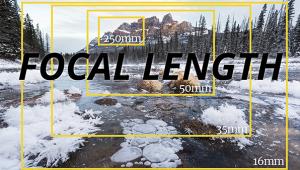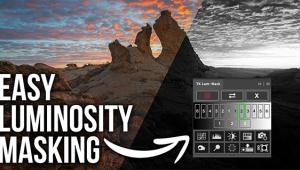Digital Help
Q&A For Digital Photography
Digital Help is designed to aid you in getting the most from your digital photography,
printing, scanning, and image creation. Each month, David Brooks provides solutions
to problems you might encounter with matters such as color calibration and management,
digital printer and scanner settings, and working with digital photographic
images with many different kinds of cameras and software. All questions sent
to him will be answered with the most appropriate information he can access
and provide. However, not all questions and answers will appear in this department.
Readers can send questions to David Brooks addressed to Shutterbug magazine,
through the Shutterbug website (www.shutterbug.com),
directly via e-mail to: editorial@shutterbug.com
or fotografx@mindspring.com
or by US Mail to: David Brooks, PO Box 2830, Lompoc, CA 93438.
Image Bit Depth: Use It Or Lose It
Q. What happens if you take a TIFF image file that has been saved as 8 bit and
re-save it as 16 bit? Do you get the same results as if you are making color
and exposure adjustments to an 8-bit file? Dumb question, I know, but I'm
just curious as to what you might say.
Randy
A. There's no advantage, as the loss of information is irretrievable
when you change from 16 bit to 8 bit. However, as long as an original 48-bit
file is open you can revert to the original file's bit depth because the
information is held in RAM until the image file is closed. Converting a file
from 8 bit to 16 bit does not gain any information, of course, but I've
found it does help when running some processes, like increasing image size by
interpolation, as it seems to produce a smoother result.
When People Pictures Need Model Releases
Q. First of all, thanks for a great magazine! I have a photo that I took at
Disneyland that I want to enter in your Fill Flash contest and the photo has
a profile of a couple of teen-age kids. I guess if you were one of their friends
or family you would probably recognize them. My question: Is that what is considered
a recognizable person and do I need a model release or permission of some kind
to use the picture? I have read that a recognizable person is someone who is
in the public eye, like an actor, or athlete, or someone in public office, things
of that nature. I also contacted Disney and they said I can use images that
I took in the park for a contest.
Dave Lake
A. You answered your own question when you said that family and friends
would recognize them. A model release is required to publish a photograph of
any person who can be recognized as such and identified by anyone. The only
common exceptions involve news events and the publication of photographs as
news. Just because a person is a publicly recognizable figure does not preclude
their privacy, and pictures of them not as part of a newsworthy event cannot
strictly be published without permission. However, when such a person steps
out on the street that can, in the opinion of some, constitute a news event.
It's a sticky dilemma.
The pictures you took at Disneyland, if published, could be a problem, and without
a release from the subjects most publications will not publish the pictures.
(Editor's Note: Agreed. We will not knowingly publish
images of "recognizable" people without a model release. This goes
especially for minors and children. We do get model releases with many of the
images submitted for Picture This!)
Choosing A Video Card For Digital Photography Computing
Q. In a recent article you talked about "special high-performance professional
video cards." Have you reviewed these cards for Windows users in past
issues?
Jim McCaffery
A. Ten years ago there were a dozen or more brands of video cards,
but consolidation has reduced the number of moderate cost, high-performance
cards to about three. The only one I recommend for Photoshop support is the
ATI Radeon 9000 series, although in the past I used Matrox Millennium video
cards with good success.
Digital Tablets And LCD Displays You Can Draw On
Q. I am a photographer and am planning to upgrade my computer to a G5, and I'm
trying to decide which display to use. My choices are Wacom's Cintiq 21UX
or the Mac 30" widescreen and a Wacom Intuos3 9x12 pen tablet. I like
the widescreen format with room for palettes, but I also like the idea of doing
corrections right on the screen. I have not used a pen so either will be new
to me.
Russell Pettit
A. Unless you are a skilled freehand artist I think you will find that
a Cintiq, and drawing with a pen on the display screen itself, will not be much
of an advantage for you. I have been using tablets, currently a 9x12"
Wacom Intuos3 with a "puck" for as long as tablets have been available,
mostly because I do a lot of retouching and some graphic design work. I worked
with an earlier model of the Cintiq and did not find it particularly helpful.
Plus, that model did not support critical color correction and editing as well
as a good standard monitor or display.
I have also worked with and tested the Apple Cinema Display. My report is in
the September issue of Shutterbug (and online at www.shutterbug.com). Personally
I did not find the larger size of the 30" model any particular advantage
for photographic imaging work, but I can imagine the large size may be an advantage
to others, like video editors.
My perspective is that critical color is of the upmost importance, including
precise calibration and profile control. The best display in that regard that
I have tested is the EIZO ColorEdge CE210W or the larger CE240W. My report on
the EIZO display is in the October issue of Shutterbug (and online at www.shutterbug.com).
Dropping A Digital Camera
Q. I have been using my digital Canon PowerShot since the beginning of the year
and find it wonderful for photographing my artwork, everything but very close-up
detail. I am extremely careful in handling the camera, however it accidentally
fell onto the floor from about 3 ft up recently. It works fine, but I wonder,
should it be taken apart to be sure nothing serious has happened to it? I do
have a one-year guarantee. Can I tell that it is OK just by the fact that it
is working now as it had before the fall?
Lois
A. Unlike film cameras of the past there are few mechanical moving
parts inside of today's digital cameras that might be damaged by a short
fall. If the camera is functioning normally in all respects, I doubt that an
inspection by a technician would reveal anything. But if it would reassure you
and provide confidence, go ahead.
The Company Who Produces Panorama Maker Software
Q. What company manufactures Panorama Maker software? I cannot find it listed
anywhere and want to purchase the software. Any help in that direction would
be appreciated.
Doug Rowley
A. The company in question is ArcSoft. For more information on purchasing
their Panorama Maker software, visit www.arcsoft.com/products/panoramamaker/.
ANNOUNCEMENT
I am pleased to announce a new Bonus Edition adding five chapters to my eBook
DIGITAL DARKROOM RESOURCE CD. The CD now contains 21 chapters totaling 266 pages
in Adobe Acrobat .PDF format, providing easy-to-read text and large high-quality
illustration. The CD is available for $20 plus $2 shipping and handling (US
Mail if available). Ordering is as simple as sending a check or money order
for $22 made out to me, David B. Brooks, and mailed to PO Box 2830, Lompoc,
CA 93438.
- Log in or register to post comments


































